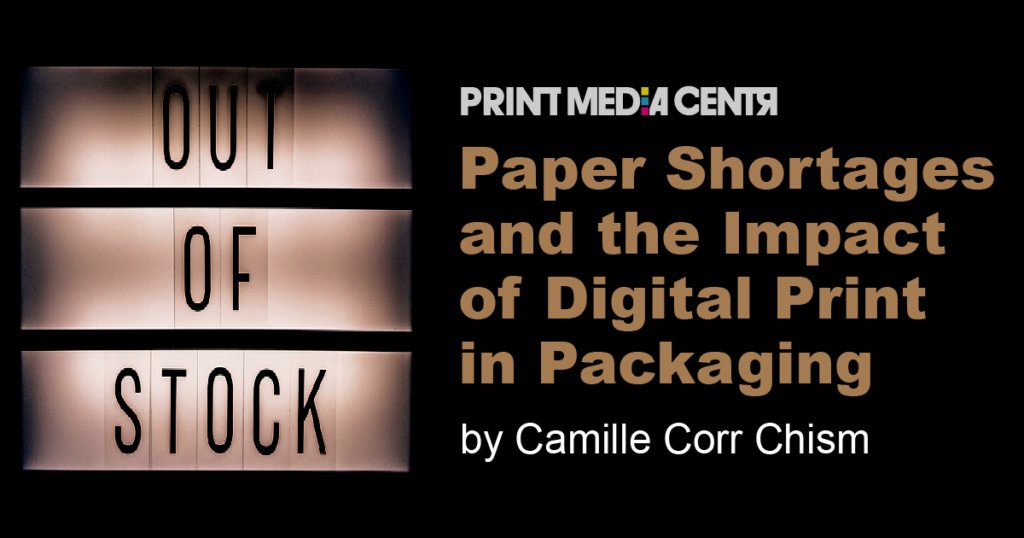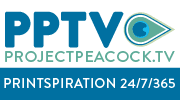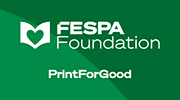
Everyone seems to be talking about supply chain issues and the paper shortage right now. Though the shortage is centered in Europe, this is having a worldwide impact.
As a packaging professional keeping up with supply chain issues over the last two years, this round of shortages is a bit different. I would compare the supply chain to an intricately built pattern of dominos. Neatly placed dominos have been standing for a long time. Occasionally, a group of dominos will fall but can be quickly stood up and stabilized. Now, it seems as if the dominos are moving faster, in multiple directions, and we can see the last dominos falling faster than they can be stopped.
There is no denying that the latest developments are leading to a new round of issues. Since 2020, manufacturing has been trying to keep up with demand, and consumers have rolled with the punches and made do with what was available.
What are some of the events that contributed to where we are now?
First, came the pandemic, everyone worked together to shelter in place, stay home, and stay safe, and we saw the following impacts immediately:
- Labor shortages
- Hoarding of supplies, food, and everyday essentials (e.g. toilet paper)
- Increases in online orders and small parcel deliveries
- Plastic resin and all types of bottles, pumps, and closures were scarce with extended lead times due to the crush of sanitizer orders
Just as industries were making headway towards normalcy, additional factors cropped up and these factors contributed to the current situation.
- Trucking shortages were present prior to the pandemic, but have reached a critical level
- Sea container backups led to port congestion for loads and costs skyrocket
- Packaging allocations began for all types of paper products
- Protest truck convoys in Canada, Los Angeles, Washington, DC, and all Canada/US border crossings
- The paper strike in Finland upset the global label supply
- Ukraine attacks
- Oil Sanctions
Because of the supply chain constraints, we are seeing somewhat of a scramble to move from paper to other substrates and packaging formats. All these factors are leading to shortages that are causing manufacturers to lose revenue because they cannot produce or ship enough products.
How do the ongoing supply chain issues of the last 2 years tie into digital printing in the packaging industry?
Most think of paper shortages in terms of food, toilet paper, and writing paper shortages. Paper is a critical part of a multitude of products using paper products in parts of the package. These examples exemplify the broad impact of running out of paper, or even labels.
- Wine – labels, cartons, and corrugated boxes
- Government – reams of paper for documents
- Schools – supplies and related packaging
- Wedding Industry – cartons, boxes, invites, candy, flowers, token gifts
- Labels – this could be a blog in itself
- Boxes – shipping and storage across all industries
- Cartons – primary packs, signage
- Paper – there is a wide array of from packaging, industrial supplies, home goods, stationery, office supplies, promotional material, mail, art supplies, books, cups
Let’s hear your comments on these questions. What do you think?
- How much will the paper shortage impact the momentum the packaging industry has achieved with digital printing?
- How are companies adapting to these constraints?
- What plans should manufacturers make within the next 90 to 120 days when labels are anticipated to run out of stock?
- Can other substrates slow down or avoid depletion of label stock so that companies can keep meeting the demands of their customers?
- Is this situation temporary or will new packaging formats appear from this?
Packaging with digital print will continue to be a growth area because of the flexibility that manufacturers have to make adjustments, based on the availability of packaging materials and formats. Automation technology that is being implemented to make up for the labor shortage works well with digital platforms. Digital printing can also be placed directly on the packaging, eliminating the need for labels for
I am optimistic that the global supply chain will rebound and recover once the acute and chronic factors related to materials, volumes, and the supply chain are resolved. Despite predictions of difficult times ahead (article from Print week, March 24, 2022) I am optimistic the world will take the knowledge gained and best practices from this experience to build an even stronger and more robust supply chain. The
As the world recovers, the new normal for digital printing and the supply chain infrastructure will include a combination of new materials, improvements to existing infrastructure, increased automation, and incorporation of digital packaging formats.
##
Read last month’s post from Camille: https://printmediacentr.com/byob-beverage-packaging-gets-personal
See all posts from Camille here.
 Camille Corr Chism, CPPL Fellow, has a diverse background in packaging engineering, design, supply chain, project management, and new product introductions. Her experience includes a variety of industries including food, e-commerce, technology, distribution, pharmaceutical, industrial, and automotive. Earning an MS and BS in Packaging, Camille earned a Six Sigma Black Belt (2019), and a lifetime certification as a Certified Packaging Professional in 2006. She was inducted into the IoPP College of Fellows in 2014.
Camille Corr Chism, CPPL Fellow, has a diverse background in packaging engineering, design, supply chain, project management, and new product introductions. Her experience includes a variety of industries including food, e-commerce, technology, distribution, pharmaceutical, industrial, and automotive. Earning an MS and BS in Packaging, Camille earned a Six Sigma Black Belt (2019), and a lifetime certification as a Certified Packaging Professional in 2006. She was inducted into the IoPP College of Fellows in 2014.
Camille is the owner of Indigo Packaging and Consulting. She is the go-to person for all your packaging products and packaging design needs. Connect with her on LinkedIn, LinkedIn Company Page, Twitter @indigopkg, and Instagram @indigopkg












